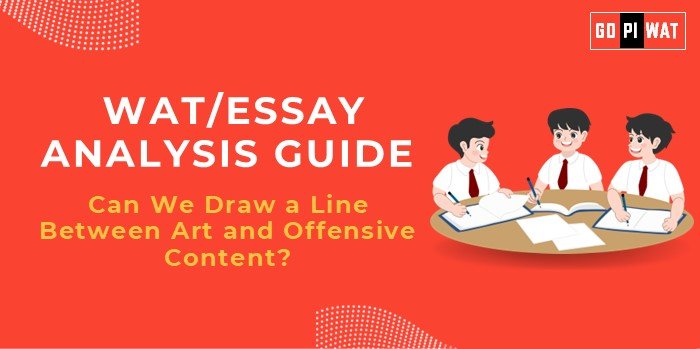📋 Can We Draw a Line Between Art and Offensive Content?
🌐 Understanding the Topic’s Importance
Art and offense intersect across legal, cultural, and ethical domains, making this a critical topic for future leaders managing diverse teams and global branding.
⏱️ Effective Planning and Writing
- Time Allocation:
- 🕒 Planning: 5 minutes
- 🖊️ Writing: 20 minutes
- 🔍 Reviewing: 5 minutes
- Preparation Tips: Identify impactful case studies and clarify cultural relativism principles.
✍️ Introduction Techniques
- Contrast: “Art can inspire hope and spark outrage—where do we draw the line?”
- Philosophical Query: “Should art’s freedom surpass societal norms?”
📊 Structuring the Essay Body
- Achievements:“Art transcends boundaries, exemplified by globally transformative works like Picasso’s Guernica.”
- Challenges with Comparisons:“Censorship debates in India, China, and the US reveal varied approaches to balancing freedom and ethics.”
- Future Outlook:“AI-generated art raises new questions: How do we regulate the undefinable?”
📄 Concluding Effectively
- Balanced: “Art’s power lies in its ability to question norms, yet sensitivity to cultural dynamics is essential.”
- Global Perspective: “Lessons from global cases highlight the need for universal frameworks to balance expression and respect.”
✍️ Sample Short Essays
- Balanced Perspective:
“Art is a mirror reflecting societal truths, yet it must respect the cultural fabric it critiques.” - Solution-Oriented:
“Strengthening ethical guidelines while promoting artistic freedom offers a sustainable path forward.” - Global Comparison:
“From the US to China, diverse legal and cultural boundaries shape the art-offense debate.”


